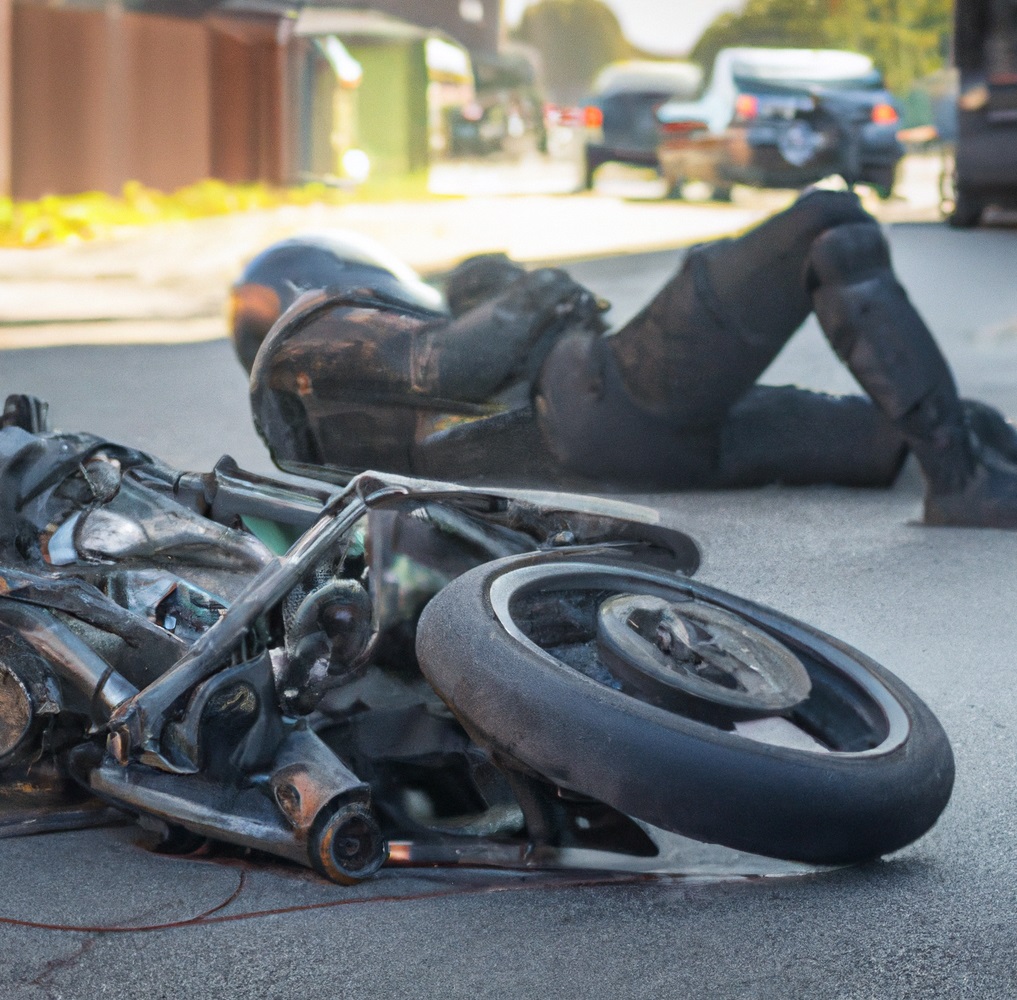Motorcycle Accidents

The roaring spirit of motorcyclists, often portrayed as the epitome of freedom and rebellion in popular culture, can be a double-edged sword in real-world scenarios. When accidents occur, motorcyclists frequently find themselves battling more than just their injuries; they’re up against deeply entrenched biases from various quarters.
Many people, perhaps influenced by movies or certain media portrayals, unconsciously perceive motorcyclists as reckless speed enthusiasts. This perception often extends to the immediate aftermath of an accident. From the police arriving on the scene to the initial impressions recorded, there’s an underlying assumption that the biker might have been “asking for it” due to their supposedly daring nature.
Further complicating matters is the stereotyping based on appearance. The leather jackets, tattoos, or even the characteristic sound of a motorcycle can lead to assumptions about the rider’s character. This “outlaw” or “rebel” image, celebrated in some circles, can cloud judgments and influence opinions, especially when trying to establish fault or liability.
Even after the initial stages, as motorcyclists seek compensation, they might encounter challenges. Insurance adjusters, always on the lookout to minimize payouts, might latch onto these biases to assume the motorcyclist was at fault, leading to reduced settlement offers. The journey doesn’t end there. In a courtroom, jurors, each with their personal experiences and beliefs, can also hold misconceptions about motorcyclists. Such biases, even if subtle, can influence the outcome of a trial, potentially affecting the justice and compensation a motorcyclist receives.
However, the good news is that at Swain Law Group, we are aware of these biases and will skillfully weave together a narrative that counters these generalizations. Through thorough evidence gathering, from eyewitness testimonies to expert opinions, we will demonstrate the motorcyclist’s adherence to traffic rules and safe riding practices. By humanizing the motorcyclist, showcasing their personal and community ties, and focusing on their individual story, we aim to dispel unfounded biases, ensuring that prejudices don’t stand in the way of justice.
Swain Law Group is accustomed to facing uphill battles in the aftermath of accidents. If you’ve been injured in a motorcycle accident, do not hesitate to contact us for a free consultation. With the right representation and approach, we can ensure that you’re seen as an individual, not a stereotype, and that you receive the justice and compensation you deserve.
What To Do After a Motorcycle Accident
Experiencing a motorcycle accident can be both shocking and disorienting. However, the actions you take immediately after can be crucial for your personal well-being and in protecting your legal rights. Here’s a step-by-step guide to help you navigate the aftermath of a motorcycle accident.
Ensure Personal Safety
Your safety and the safety of others involved should be the top priority. If possible, move away from the flow of traffic to a safer location to prevent further harm. Turn on hazard lights or set up flares, especially if visibility is low or it's nighttime.
Seek Medical Attention
Even if you feel fine, injuries from motorcycle accidents can sometimes manifest later. It's essential to get checked by a medical professional either at the scene, if an ambulance is present, or shortly after. This will also provide official documentation of any injuries, which could be crucial later on.
Document the Scene
If you're physically able, gather as much evidence from the accident scene as possible:
Photos: Capture different angles of the accident scene, including the positions of the vehicles, your motorcycle, skid marks, road conditions, and any visible injuries you may have.
Witness Accounts: Talk to any witnesses present. Take down their contact information and a brief summary of what they saw.
Exchange Information: Collect the other driver's name, contact details, insurance information, and vehicle license number.
Do Not Admit Fault
Emotions can run high after an accident, and it's natural to want to apologize or discuss the incident. However, it's vital to avoid making any statements that could be interpreted as admitting fault. Even saying something like "I didn't see you" can be used against you later. Stick to the facts and avoid speculative discussions.
Contact Swain Law Group to speak with one of our experienced Personal Injury Specialists
- Before reaching out to insurance companies, it’s wise to consult with a personal injury Specialists, especially if you sustained injuries or there are disputes about who was at fault:
- Expert Guidance: Our attorneys can guide you on how to communicate with insurance companies, ensuring you don’t unintentionally jeopardize your claim.
- Protect Your Rights: Swain Law Group will work to ensure your rights are protected and help you understand the potential compensation you might be entitled to.
- Build Your Case: Should your claim proceed to litigation, we will use the evidence gathered to build a robust case in your favor.
The moments following a motorcycle accident can be overwhelming. By following these steps, you can ensure your safety, protect your rights, and set a strong foundation should you need to pursue compensation for damages or injuries. Remember, a knowledgeable personal injury attorney can be an invaluable ally during this challenging time.
Motorcycle Safety and Additional Risks
Motorcycles, synonymous with freedom and the open road, offer riders an unparalleled driving experience. However, this very allure comes with its own set of challenges. Unlike their four-wheeled counterparts, motorcyclists face unique vulnerabilities on the road. Recognizing these risks can be the key to safer rides and fewer accidents.
Vulnerability to Severe Injuries
Unlike cars that have a protective shield of metal, airbags, and other safety features, motorcycles expose riders directly to the external environment. As a result, even a minor collision can lead to serious injuries. According to the National Highway Traffic Safety Administration (NHTSA), motorcyclists are 27 times more likely to die in a crash per vehicle mile traveled than occupants of passenger vehicles.
Reduced Visibility
Motorcycles, given their smaller size, often go unnoticed in a car’s blind spot. Drivers may not always anticipate a motorcyclist’s movements or may misjudge their speed, leading to dangerous situations, especially during lane changes or at intersections.
Impact of Road Conditions
What might be a minor inconvenience for a car can be a major hazard for a motorcyclist. Wet roads, potholes, debris, or uneven surfaces can pose significant risks. Motorcyclists need to be constantly aware of the road conditions and adjust their riding techniques accordingly.
Lack of Stability
With only two wheels in contact with the road, motorcycles are inherently less stable than cars, especially during braking or when taking sharp turns. This lack of stability can lead to single-vehicle accidents if the rider isn’t trained to handle such situations.
Importance of Safety Gear
While safety gear doesn’t prevent accidents, it plays a crucial role in minimizing injuries. Helmets, for instance, reduce the risk of death by 37% and the risk of head injury by 69%, as per the Centers for Disease Control and Prevention (CDC). Beyond helmets, jackets, gloves, boots, and other protective gear can safeguard riders from severe road burns and injuries.
Awareness is the first step towards prevention. By understanding the unique challenges they face, motorcyclists can adopt safer riding practices. And for those unfortunate times when accidents do occur, it’s vital to have a knowledgeable ally by your side to navigate the complexities of motorcycle accident claims. Swain Law Group stands ready to advocate for motorcyclists, ensuring they receive the maximum compensation and justice they deserve.
Motorcycle Safety and Prevention Tips
Motorcycles offer a unique blend of freedom, agility, and connection to the road. However, this exhilarating mode of transport requires heightened attention to safety. Recognizing this, our firm is deeply committed to promoting motorcycle safety. We believe that informed riders are safer riders. In this spirit, here’s a guide on best practices that every motorcyclist should embrace to reduce the risk of accidents.
Regular Motorcycle Maintenance is Crucial
Before hitting the road, ensure your motorcycle is in optimal condition. Regular maintenance isn’t just about prolonging your bike’s lifespan; it’s about ensuring your safety and the safety of those around you.
Tires: Check for proper inflation and ensure they’re free from cracks, bulges, or signs of wear.
Brakes: Ensure brake pads are in good condition and that the brakes respond promptly.
Lights: All lights, including signals and brake lights, should be functional.
Fluids: Regularly check and top up necessary fluids – oil, brake fluid, and coolant.
Mirrors and Controls: Ensure mirrors provide a clear rear view, and all controls are responsive.
Safety Gear: Your First Line of Defense
While the open road is alluring, it exposes riders to elements that can be hazardous. Equip yourself with the right gear every single time you ride.
Helmets: Choose a helmet that meets safety standards. A full-face helmet offers the best protection, safeguarding your face from debris and providing crucial head protection during impacts.
Jackets & Pants: Opt for abrasion-resistant materials like leather or specially designed synthetics. These can protect against road rash and provide some cushion during falls.
Gloves: Protect your hands from abrasions and improve your grip with sturdy, non-slip gloves.
Boots: High-ankle boots shield your feet and ankles, ensuring they’re protected from potential injuries.
Visibility: Consider reflective or bright-colored gear, especially for nighttime rides, to increase your visibility to other road users.
Defensive Riding:
Be Alert and Anticipate Dangers. The road is unpredictable, but a defensive approach can significantly reduce risks.
Stay Visible: Position yourself in lanes where you can be easily seen, especially at intersections where many accidents occur.
Keep Your Distance: Maintain a safe following distance, giving yourself time to react to sudden stops or turns.
Avoid Blind Spots: Stay out of blind spots of larger vehicles, ensuring you’re always visible to other drivers.
Anticipate Hazards: Be it a pothole, wet surfaces, or a car signaling a turn, anticipate potential threats and adjust your riding accordingly.
Signal Intentions: Always use your indicators when changing lanes or turning, making sure other road users are aware of your intentions.
Safety on the road is a shared responsibility. Attorneys at Swain Law Group stand ready to represent and support victims of motorcycle accidents, our genuine hope is that through awareness and adherence to these safety measures, such incidents can be drastically reduced. Ride safe and stay protected. Do not hesitate to contact us any time for a free consultation if you have been injured in a motorcycle accident.

